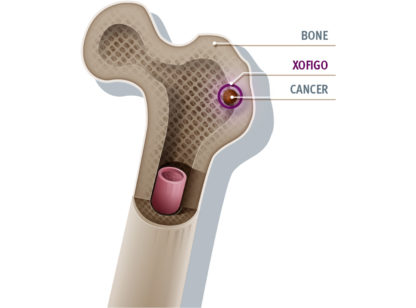When a prostate biopsy is performed, tiny thread-like “cores” are obtained through the tip of a needle attached to a biopsy gun. These tiny specimens are sent to a highly trained pathologist to examine the tissue under a high-powered microscope. The appearance of prostate cells and their architecture help determine the presence or absence of cancer. If cancer is seen, a Gleason score is assigned based on the degree of disruption of cellular size, shape and architecture. Beyond the Gleason score, genetic information can be obtained from the biopsy specimen by performing biomarker assays on the sampled tissue.
Two important markers, ERG and PTEN, also known as ProstaVysion, can be used in men with diagnosed prostate cancer to predict the behavior of the cancer and the patient’s ability to fight it. This information is useful in making treatment decisions, especially if the patient is considering watchful waiting or a focal treatment.
ERG (ETS-gene) is a protein that is found infrequently in prostate cells. Its over-expression in prostate cancer cells has been linked to cancers with aggressive behavior. This type of cancer is referred to as “ERG positive.” The severity of this gene mutation tends to be worse with the presence of PTEN mutation at the same time.
PTEN (phosphates and tensin homologue deleted on chromosome-10) is among the most common gene mutations in human cancer and is responsible for cell growth control or the patient’s individual ability to fight the growth of the cancer. Both sets of this gene help control cancer growth so if one or both are missing it can allow for uncontrolled growth of the cancer.
If we liken prostate cancer to a bicycle, view it as either a leisurely tour through the countryside: a slow-growing, or indolent cancer OR a wild, back-country mountain-bike ride: an aggressive, fast-growing cancer. ERG is like the bike and how fast it’s going. Presence or absence of each set of PTEN genes is like the front brakes, back brakes or both. If one set fails there could be trouble, but if both fail, the bike can speed out of control.
Examining the DNA from the cancer cells collected at the time of biopsy can provide you and your doctor with additional prognostic information about your cancer. The genetic profile of a cancer can be helpful in decision-making as it reveals information about that cancer’s likelihood of progression and aggressiveness. This information is in addition to the Gleason score and can be obtained from the same biopsy cores that were taken at the time the Gleason score was determined. A new biopsy does not have to be performed if the tissue from the initial biopsy is accessible.
Patients who are considering waiting for treatment or selecting a minimally invasive, focal therapy may wish to consider discussing biomarker assays with their care provider to get as much information as possible about both their cancer and their immunosuppressive ability to fight it.
Bernadette Greenwood is director of clinical services at Desert Medical Imaging (DMI), as well as an author and educator. For more information visit www.DesertMedicalImaging.com or call (760) 694.9559.











































Comments (0)